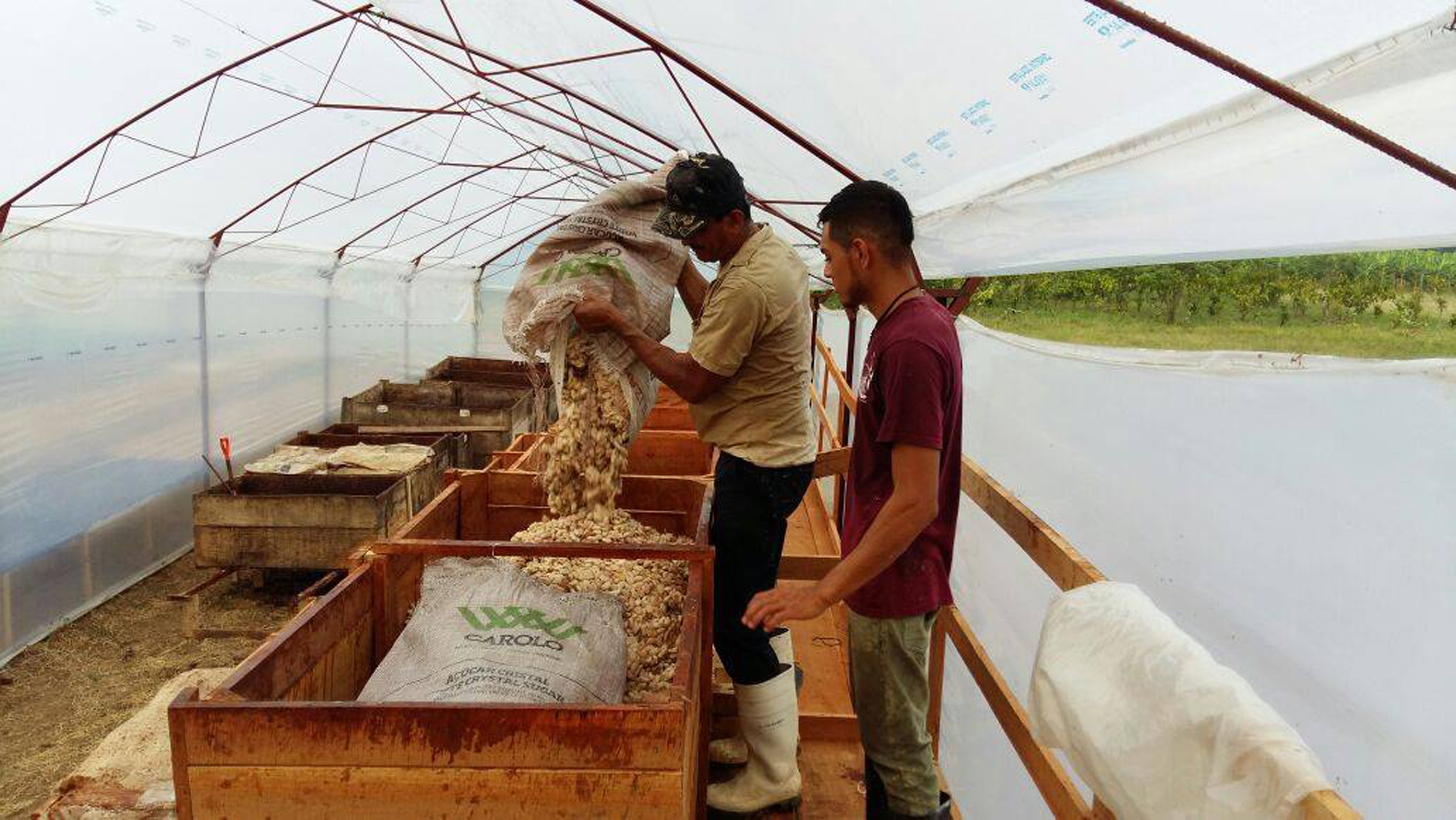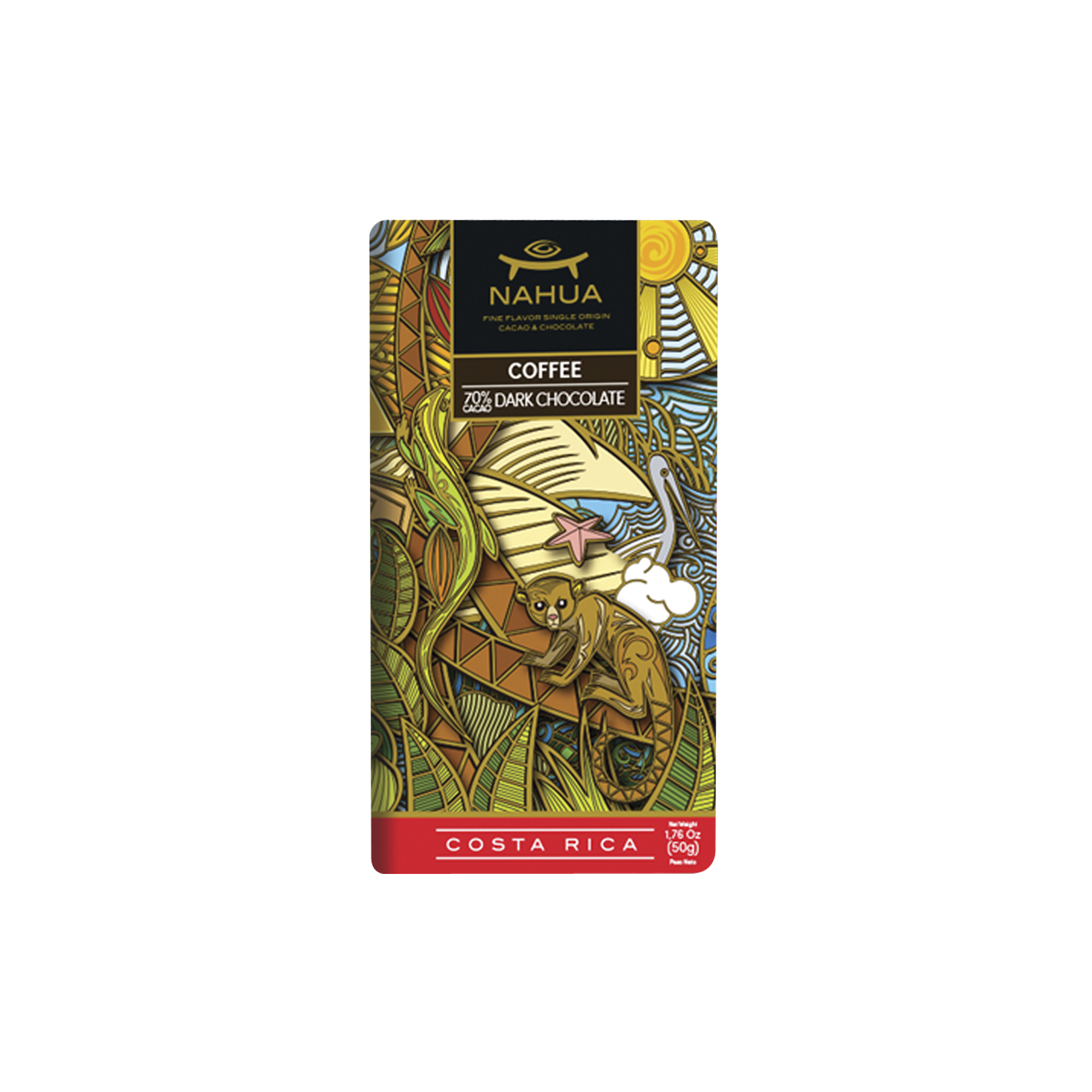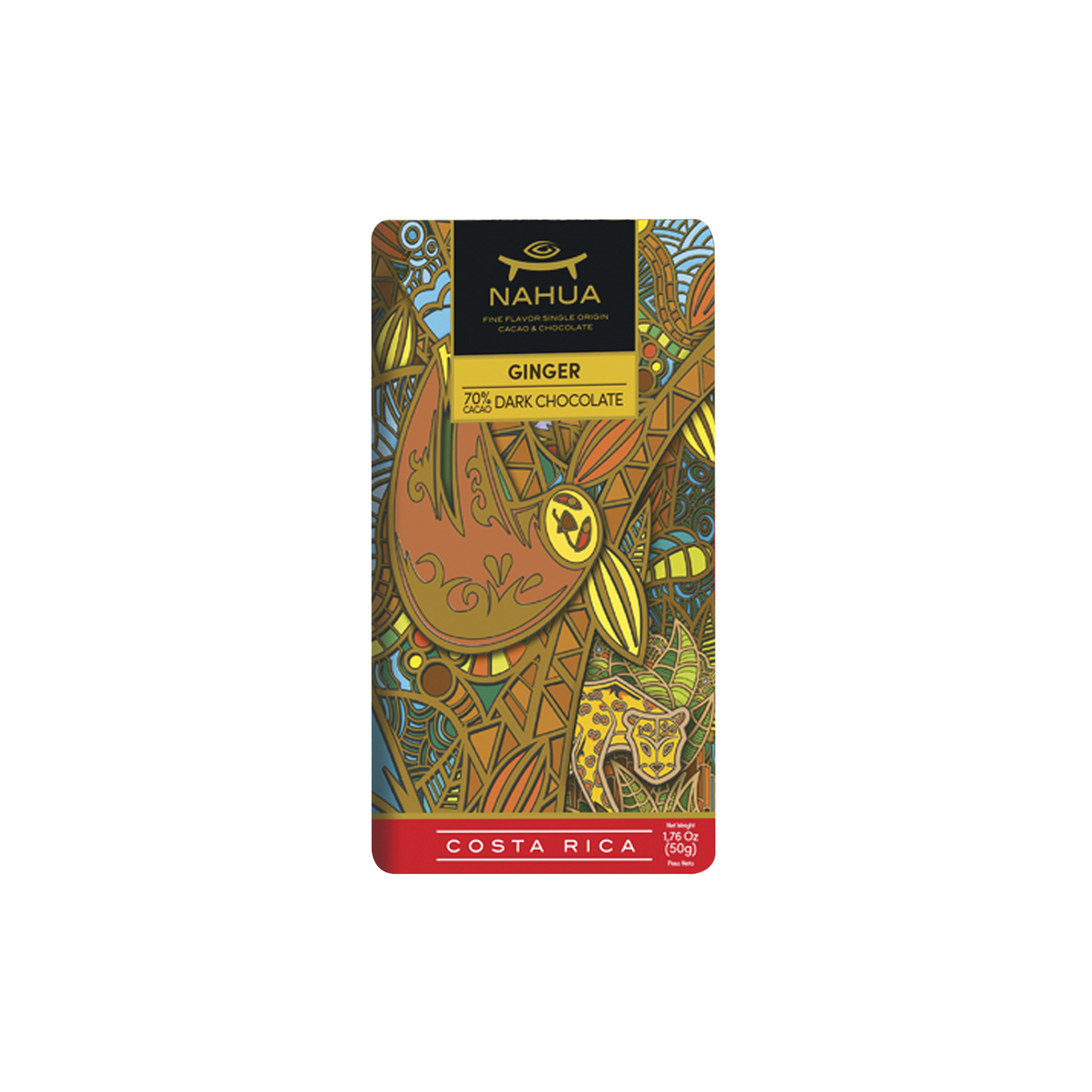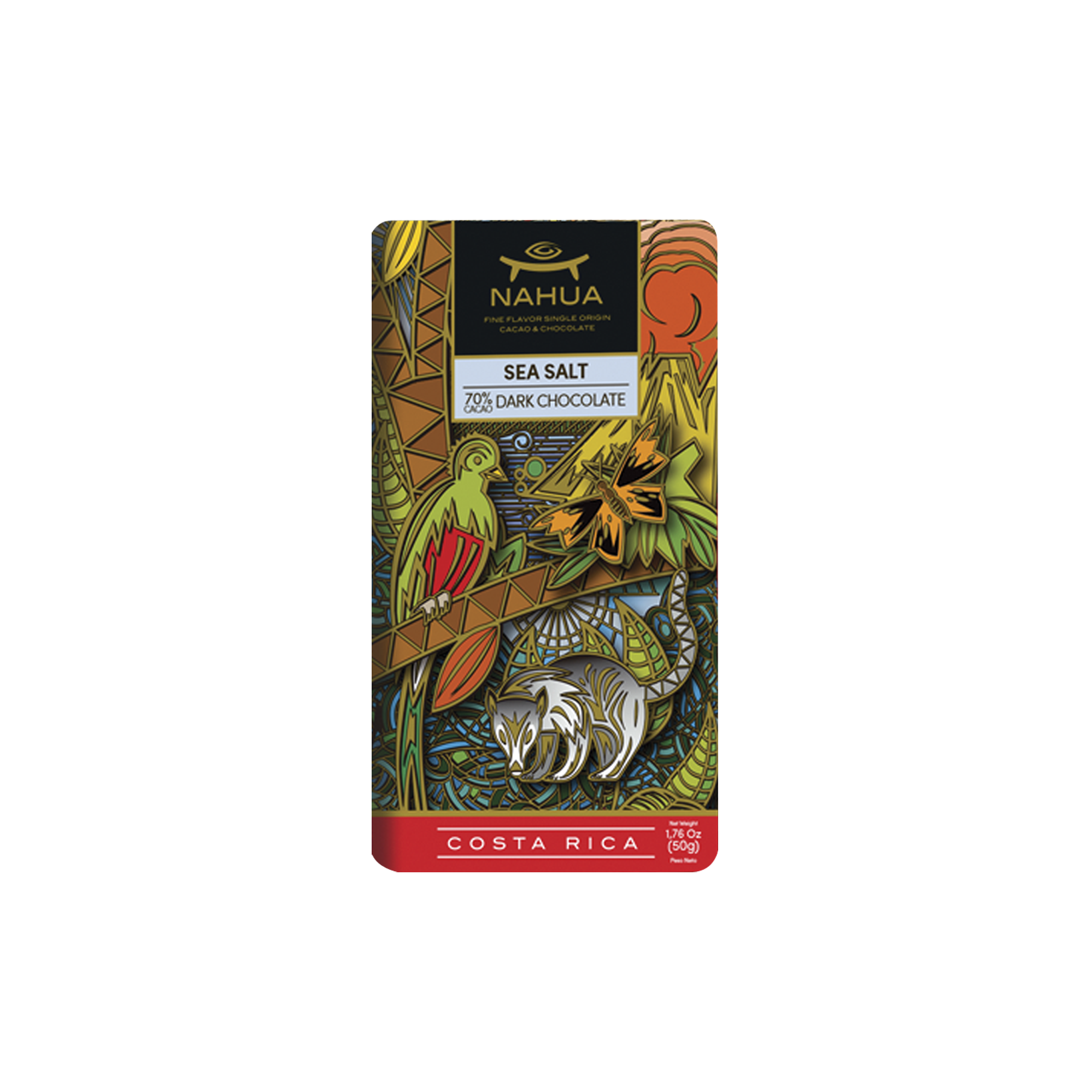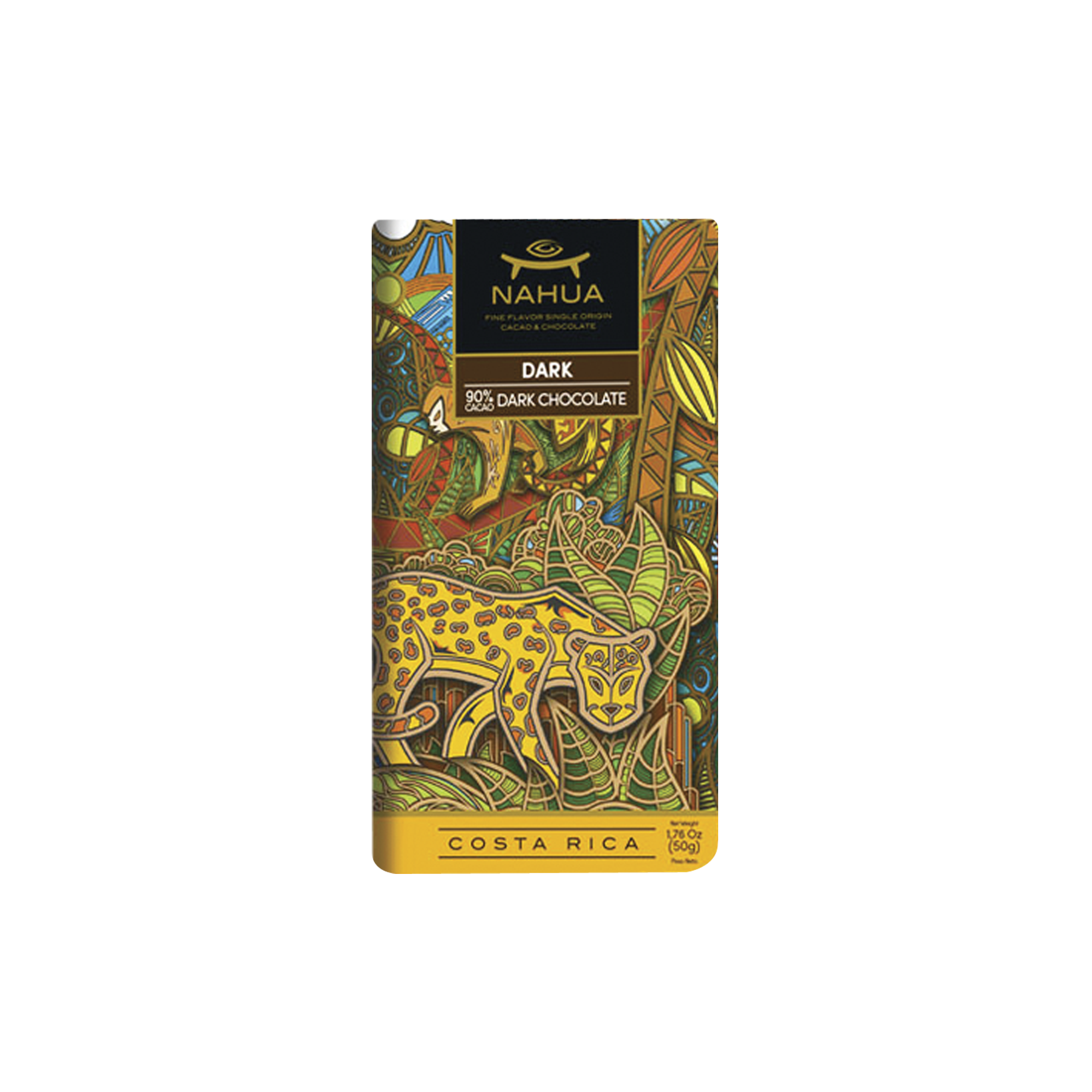In tandem with Costa Rica’s tropical landscape, with its wholesome warm air and cooling sea breeze, the crooning birds that fill the sky and the creatures that prowl its jungles, there is its people and their close companionship with the land.
No profession better exemplifies this connection than the cacao farmers, the men and women that cradle and care for Costa Rica’s cacao trees with loving hands. Conveying this relationship was the ambition of artist Carlos Kidd, whose effervescent mural depicting a Costa Rican jungle was commissioned by Nahua to highlight the interconnection between the earth and its intimate toilers.
Before even arriving at the end-product label of their chocolate bars, Nahua’s tapestry is weaved with symbolism. Much of Costa Rican history is told through the lens of the indigenous Nahua people, the company’s namesake. The industrious Nahua were famous for their cultivation of the cacao plant that they would grow, tend to, and harvest beans from the plant’s pods, eventually crushing them into delicious nibs with a grinding stone—the company’s chosen symbol that is proudly underscored by their name.
Their chosen banner is a combination of name and imagery to represent the vibrant Costa Rican symbiosis between land and people. But their embodiment of culture does not begin and end with their indigenous history, it is seen throughout habits and attitudes, past and present. Costa Rica’s location as the frontier border between Central and South America meant that it took a long time for external cultures to influence the country, the result of which was that its people—natively known as Ticos— practised living simply, with straightforward communicative and epicurean values. It is a modest moral, but profound in the greater context of the world, particularly in the acceleration of contemporary times, and even more so in the context of the turbulent and often corrupt world of cacao farming.
This simplicity, beyond the inherent taste given by the tree variant or the influence of its soil, is perhaps what Nahua represents most earnestly. The quality of their cacao was never doubted—long before they existed as bean-to-bar chocolate makers, other chocolatiers around the world were winning awards using Nahua’s beans—but the true representation of Costa Rica perhaps lies in the holistic awareness of the people and their relations with the land. Through their cacao renovation programs, they not only foreground sustainable practices but also educate current and budding cacao farmers in ways that move the value system surrounding cacao away from commodity and toward pride of the culture. It is a slow process to root a company as much to the people as to the land but to do so is a virtue that rewards both and nourishes all, a virtue that appears almost magically simple but is as breathtakingly vibrant as the country it takes place in.
Nahua
